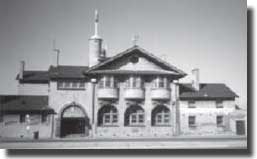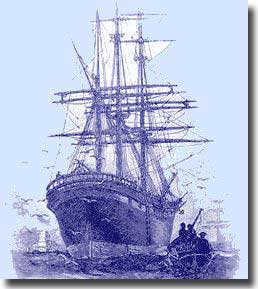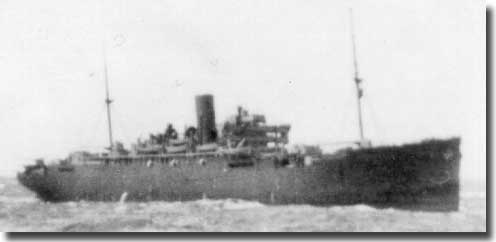|
Passport to the World over 64 years. Pages from my Travel Diary
Visit to Marine Art Show. The Flying Angel Club, Mission to Seafarers, Melbourne. Friday the 11th. of July 2003
Last Friday the 11th. of July, with Don Boyle, the current President of the Victorian Chapter of the Naval Historical Society of Australia and his wife Kathie, I visited the show. I had always been aware of the location of the Mission, but one could be forgiven for either driving or walking past without even sparing it a sideways glance. In 1916, the then Governor of Victoria Arthur Stanley, laid the foundation stone of a building designed to serve visiting seamen who arrived in the port of Melbourne aboard their ships from around the world. Given the current changes in ships and the carrying of cargo, now all packaged into steel containers, ships rush into port, they are unloaded all through the night, to immediately sail away the next morning. their crews are lucky to even set foot ashore let alone go off to the Flying Angel Club at the Mission.
The Art Show. Firstly, above the stage some old photographs, one with Chaplain Oliver, a former worker here, but he was the Anglican Chaplain in my ship the 8 inch heavy cruiser HMAS Australia during 1939-1941, when I served as a Midshipman. He had an unfortunate and very pronounced stammer, that gave him great difficulty with the phrase "Let us Pray!" So much so, that our sailors very irrevently christened him "Stuttering Sam." Secondly, one of the paintings features a sailing ship docked at Liverpool alongside the famous Liver Building. its twin towers each topped with a stone Liver Bird, that mythical flightless bird. In December of 1940, with HMAS Australia snugly docked in Gladstone Dock here, the English traitor Lord Haw Haw. broadcasting propaganda from Germany, promised my ship that:
The subsequent nightly bombing of this port almost kept his Lordship's word, but the Liver Birds did remain intact. The Chapel.
HMS Jervis Bay, sunk by Scheer Jervis Bay commanded by Captain Edwin Fegen RN, was supporting Convoy HX84 from Halifax to UK, it was made up of 37 ships, when on the 5th. of November 1940, the German pocket Battleship Admiral Scheer mounting modern 11 inch guns hove into view, Fegen ordered his convoy ships to scatter, then on the path of certain death he turned his relatively feeble ship to face the enemy, he was completely both outranged and out gunned.
Admiral Scheer His ship survived for 22 minutes before she sank, taking her Captain and 190 crew members with her, only 65 were rescued by the Swedish ship Sturholan. By providing a diversion, 32 of the convoy vessels were able to escape, and Captain Fegen was postumously awarded the Victoria Cross.
Captain Edwin Fegen. Postumously awarded the Victoria Cross. Died in action against Admiral Scheer The window in this chapel, 12,000 miles from this heroic action, remembers Jervis Bay, and her sacrifice made in the cold waters of the Atlantic Ocean, so that many others could live. This Memorial Chapel of St Peter the Mariner is the only one available in all of the Docklands area, it also carries a stained glass window of the Seafarer's Symbol, the only Seafarers Chapel world wide to do so. I was particularly taken with two beautiful timber items in the chapel, one is the carved pulpit, which depicts a replica of the stern section of an old galleon or sailing vessel at the time when both wind and sail dominated the world's ships. The second is a lovely carved timber cover for the christening font, it is surmounted by a cross, and is in memory of two WW1 Australian soldiers, one lost at Gallipoli, the other died in France. This chapel is a " Must see." and would appear to be one of Melbourne's best kept secrets of its Maritime world, and a visit is recommended to anyone evenly remotely interested in the sea, and its history in this port of Melbourne. Rest of Mission Building. There is a four bed room facility on site as the Chaplain's residence for him and his family, now lying quite empty. A fine board room has a beautiful timber table, with appropriate chairs, on its northern wall is secured another brass ship's bell, this one from the Morteon Bay. Prime Piece of Real Estate. How wonderful to think that this area, with its beautiful chapel may one day be again thronged with people enjoying maritime history.
Captain Edwin Fegen. Postumously awarded the Victoria Cross. Died in action against Admiral Scheer The Flying Angel Club at Mission to Seafarers Melbourne |





